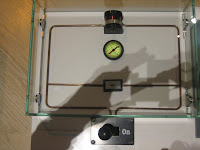Waiting for tram
The Amsterdam tramway network forms part of the public transport system in Amsterdam. Opened in 1875, the network has been operated since 1943.The trams on the network run on standard gauge track. Since 1900, they have been powered by electricity, at 600 V DC. At the termini of almost every tram line there is a suitable turning loop, so that the line can be operated by unidirectional trams.
With 16 lines, the network comprises a total of 213 km of track. The fleet is made up of 237 trams.
Every line of tram is represented by a number and a flag.










